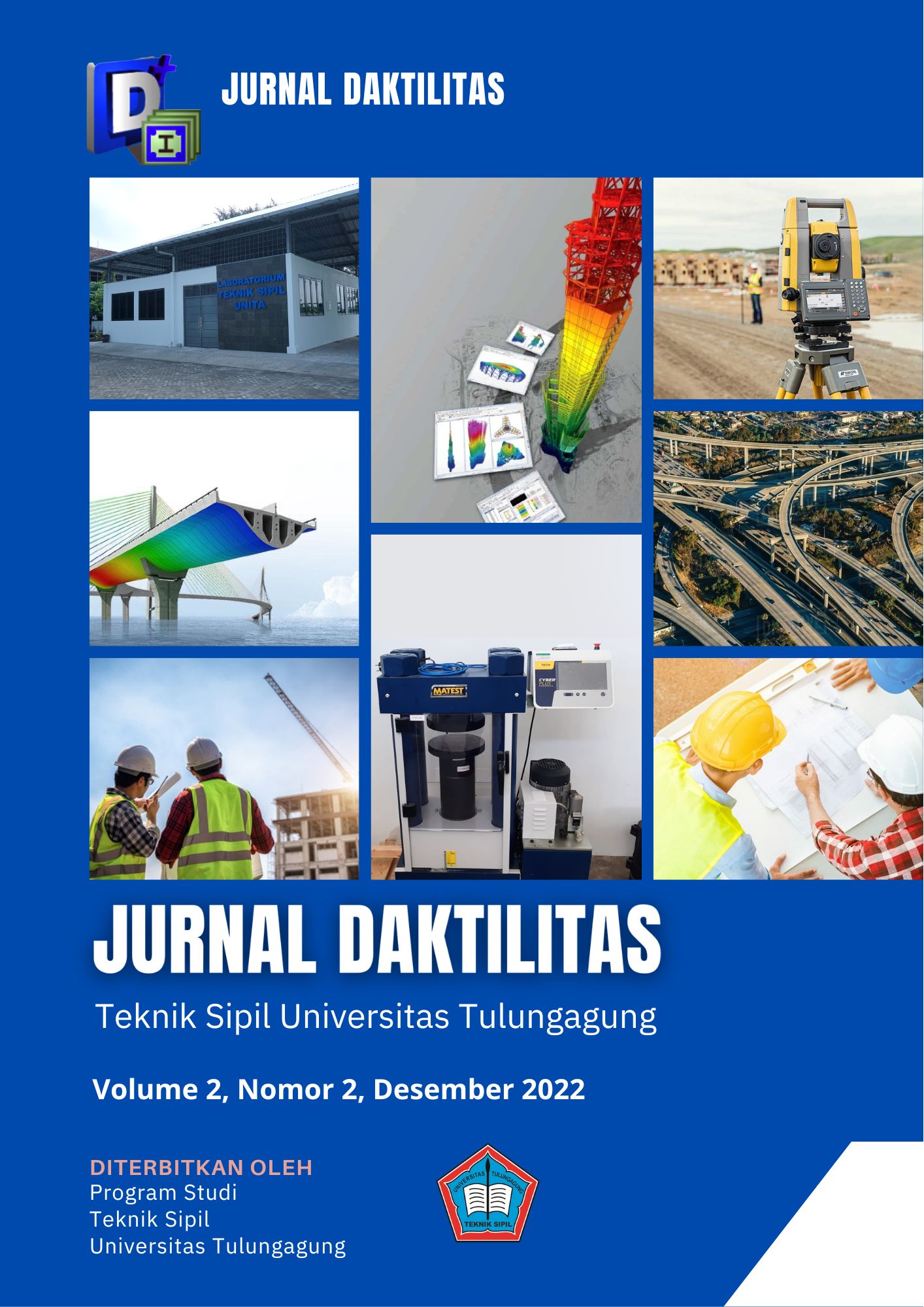LAPORAN PENELITIAN KUALITAS PASIR DARI SUNGAI BRANTAS DESA BENDOSARI KECAMATAN NGANTRU KABUPATEN TULUNGAGUNG
DOI:
https://doi.org/10.36563/daktilitas.v2i2.706Keywords:
pasir, agregat, penelitianAbstract
Abstract
River sand is sand that is sourced from excavations or mining in rivers. Steep rivers have a fast flow, so that the sediment from the rock particles will vary quite a lot at a certain distance, usually there are not many fine grains and the rocks are quite clean (Qomaruddin, 2018). Brantas sand is sand that is usually used as a mixture. Sand taken from rivers with large water discharges will have a low content of mud and organic matter.
This study aims to provide an overview of the aggregate (systematic research steps) so that the research
process can run in an orderly manner in accordance with the Indonesian National Standard (SNI) applicable
to testing.
Keywords: Sand, Aggregate, Research
Abstrak
Pasir sungai adalah pasir yang bersumber daripenggalian atau penambangan di sungai. Sungai – sungai yang terjal memiliki aliran yang deras, sehingga deposit dari partikel batu-batuannya akan bervariasi cukup besar pada suatu jarak tertentu, biasanya butir halusnya tidak banyak dan batuan – batuannya cukup bersih (Qomaruddin, 2018). Pasir brantas adalah pasir yang biasa digunakan sebagai campuran saja, Pasir yang diambil dari sungai dengan debit air besar akan memiliki kandungan lumpur dan bahan organik yang rendah.
Penelitian ini bertujuan untuk memberikan gambaran mengenai langkah – langkah penelitian sistematis supaya proses penelitian ini dapat berjalan dengan teratur sesuai dengan Standar Nasional Indonesia (SNI) yang berlaku untuk pengujian agregat.
Kata Kunci : Pasir, Agregat, Penelitian
Downloads
Downloads
Published
Issue
Section
License
Authors who publish with this journal agree to the following terms:
- Copyright on any article is retained by the author(s).
- The author grants the journal, right of first publication with the work simultaneously licensed under a Creative Commons Attribution License that allows others to share the work with an acknowledgment of the work’s authorship and initial publication in this journal.
- Authors are able to enter into separate, additional contractual arrangements for the non-exclusive distribution of the journal’s published version of the work (e.g., post it to an institutional repository or publish it in a book), with an acknowledgment of its initial publication in this journal.
- Authors are permitted and encouraged to post their work online (e.g., in institutional repositories or on their website) prior to and during the submission process, as it can lead to productive exchanges, as well as earlier and greater citation of published work.
- The article and any associated published material is distributed under the Creative Commons Attribution-ShareAlike 4.0 International License
Deprecated: json_decode(): Passing null to parameter #1 ($json) of type string is deprecated in /home/journal.unita.ac.id/public_html/plugins/generic/citations/CitationsPlugin.php on line 68





